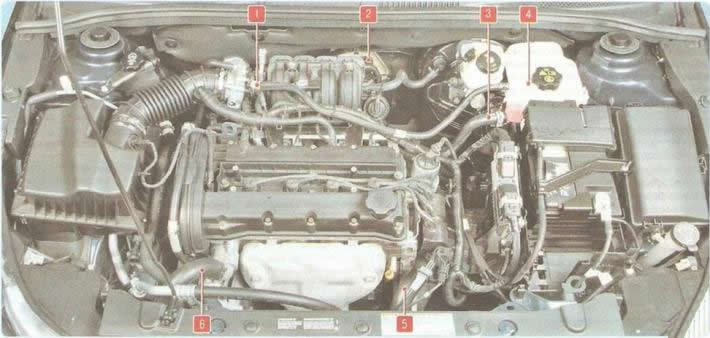
Pic. 5.16. Location of cooling system elements (for clarity, the decorative engine cover is removed): 1 - a hose connecting the throttle assembly with the expansion tank; 2 - hoses connecting the cooling system with the pipes of the heater radiator; 3 - expansion tank hoses; 4 - expansion tank; 5 - upper radiator hose; 6 - hose from the thermostat housing to the radiator
1. When inspecting the engine, pay attention to the presence of coolant in the expansion tank, the integrity of the rubber hoses, the radiator (pic. 5.16).
Helpful Hint: A broken hose can be temporarily repaired with masking tape.
Reinforced adhesive tape is particularly suitable for this purpose (e.g. silver), which can be purchased at car dealerships.
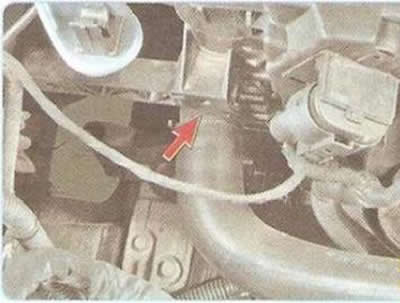
2. Inspect the connections to the outlet radiator...
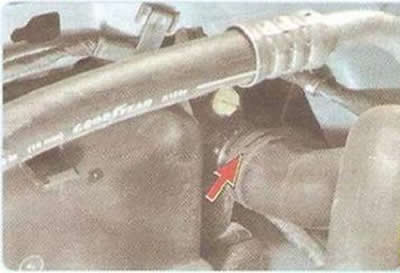
3.... and supply hoses.
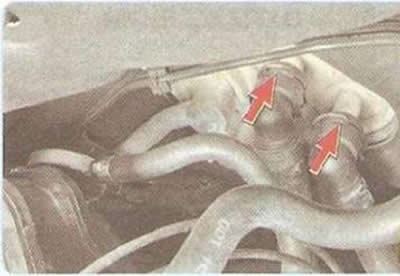
4. Inspect the connections of the cooling system hoses with the heater radiator pipes...
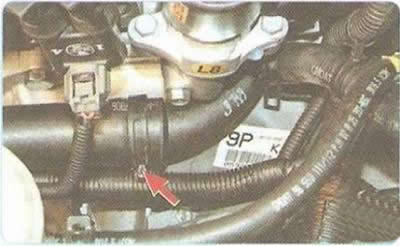
5.... as well as the supply...
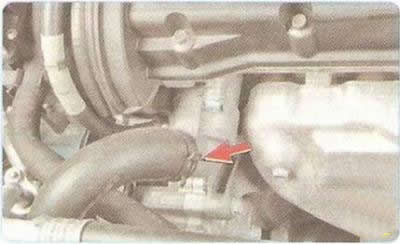
6....and outlet hoses with cylinder head.
Helpful Hint: If you find a leak in any of the hoses at the point where it is connected to the pipe, drain the coolant. Squeeze with pliers and slide the clamp along the axis of the hose.
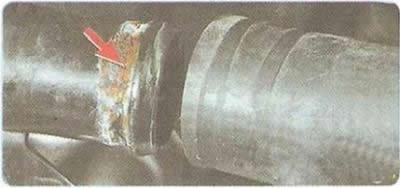
Remove the hose from the nozzle. As a rule, the cause of the leak is corrosion of the sealing surface of the nozzles. Clean the damaged surface and install the hose on the sealant. After the sealant dries, fill in the coolant.
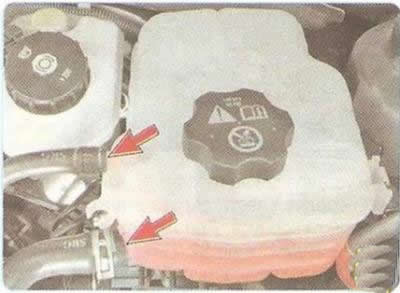
7. Check up connections of hoses with a broad tank.
There are two valves in the plug of the expansion tank: inlet and outlet. The exhaust valve plays a big role in ensuring optimum engine temperature. It maintains an excess pressure of at least 0.14 MPa in the system (1.4 kgf/cm2), providing an increase in the temperature of the start of boiling of the coolant and preventing intense vaporization. When the valve is stuck in the closed position during overheating, a significant excess of overpressure occurs, which can lead to a rupture of the expansion tank or a breakdown of one of the hoses. In turn, the jamming of the valve in the open position leads to premature boiling of the coolant.
Therefore, once a year, rinse the cap of the expansion tank with running water, and check the valve for sticking by pressing with a thin screwdriver. If in doubt, replace the plug.
